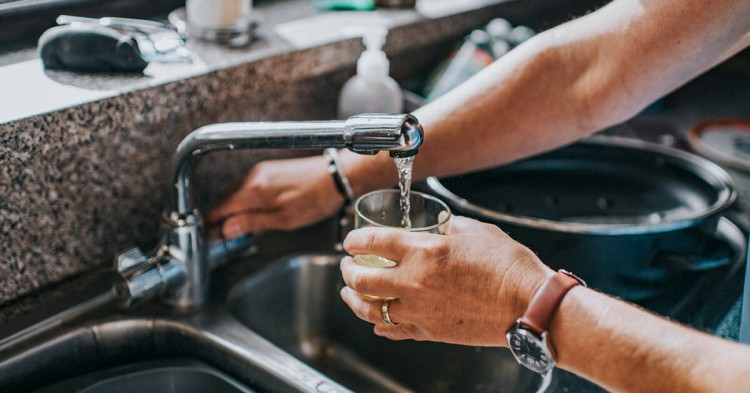
With the plethora of plumbing materials that plastic manufacturing companies make, it can be confusing to decide on your property's plumbing, particularly if you don't have significant knowledge about the subject or previous experience in the field.
Yet, the choice of plumbing equipment is crucial because it allows you to have access to one of the most vital resources in life: water.
With a better understanding of the factors you need to consider when choosing your plumbing material, you can make a more informed decision.
In this article, you'll find everything you need to know about the types of pipes used for water supply delivery.
What are things to consider when choosing pipes?
The pipes you use for your water supply must not contaminate the water you drink. By considering aspects such as water pressure and temperature, durability, and compatibility with the water supply, you can choose piping that will not be harmful to your water.
However, the material you choose must be:
- Compatible with the water supply to reduce the risk of electrolytic corrosion.
- Accustomed to the required temperatures and pressures.
- Adapted to the soil – in case of underground use – so it could reduce the likelihood of corrosion from the outside of the pipe.
- Adapted to the local climate, such as freezing conditions or salt or atmospheric sulfur.
- Capable of resisting the effects of UV rays.
5 plumbing pipes to use for potable water
Here are the five most commonly used pipes for delivering safe drinking water.
-
Unplasticized polyvinyl chloride
Unplasticized polyvinyl chloride (uPVC) is made of lead-free material – making it the ideal pipe for supplying water.
These pipes can withstand temperatures of up to 60 degrees Celsius and are primarily used for drinking water applications.
The exceptionally smooth walls of uPVC pipes make it very difficult for microorganisms such as bacteria and other particles like algae to assemble. Needless to say, this is a significant advantage for drainage pipe systems, which often have to transport wastewater containing large amounts of sediment.
These uPVC pipes are resistant to inorganic acids, alkalis, and salts, making them invulnerable to corrosion.
In addition, these pipes are cheap and easy to use, and have a low flow resistance.
-
Cross-linked polyethylene
Cross-linked polyethylene (PEX) is the go-to plumbing material for water supply in many places.
According to the Plastics Pipe Institute, PEX is used in more than 60% of new construction projects in the United States.
PEX has an advantage over copper piping because it is much more resistant to acidic water. Plus, with these types of conduits, fittings do not have to be used, which limits the risk of leaks.
A university study has also proven that there are no health risks associated with drinking water from PEX pipes.
Most people use PEX for their water supply because of its properties, such as:
- Resistance to extreme temperature and chemical attack.
- Flexibility.
- Ease of installation.
- Resistance to cold, cracking, and impact brittleness.
Another advantage of PEX is its resistance to cracking when water freezes inside the pipe.
Keep in mind that PEX is not a perfect pipe for exterior surface use. Although it can resist some UV exposure, this exposure should not exceed what is stated in the manufacturer's instructions.
-
Polyethylene
Polyethylene (PE) water supply pipes are a replacement for traditional steel pipes.
PE pipes are commonly used in distribution and water supply networks for several reasons. They have a smooth inner wall and are resistant to low temperatures.
PE pipes are easier to handle and are generally durable, with a service life of up to 50 years. With PE pipes, there are no mechanical joints that can cause leaks. They are also resistant to corrosion.
What's more, PE is a green solution for pipes as it produces a reduced carbon footprint. Should you wish to learn more, you can contact pipe manufacturers in Abu Dhabi or anywhere in the world.
-
Polypropylene
Also known as "PPR,” polypropylene is one of the few types of water supply pipes that do not react with water or most dissolved chemicals in the water.
PPR pipes guarantee zero corrosion, scaling, and erosion – the three leading causes of long-term pipe failure.
Unlike other plastics, PPR leaves no trace of chemicals in drinking water, which protects the health and safety of those who use them.
These pipes are not tied up together with chemicals, but preferably with heat. The heat helps to melt the tips and permanently fuse them, thus eliminating chemical bonding agents as a water contamination source.
A recent study found significantly lower levels of volatile organic compounds (VOCs), odor impact, and organism regeneration in PPR pipes than other types.
-
Chlorinated polyvinyl chloride
Chlorinated polyvinyl chloride (CPVC) is a cream or off-white plastic. This type of pipe can withstand temperatures up to approximately 82 degrees Celsius. It can therefore be used for both hot and cold water pipes.
CPVC has the same outside diameter as PEX, so the same spigot and socket fittings used for PEX also fit CPVC.
According to the International Association of Certified Home Inspectors (InterNACHI), CPVC pipes generally last 50 to 75 years under perfect conditions, although early failure is also reported in some circumstances.
As with PVC, a primer and adhesive must be used when making a CPVC joint. Also, make sure that the adhesive specifies that it can be used on CPVC.
What materials does the city’s main water supplier use?
Even if the pipes in your home are PVC, CPVC, or PEX, this does not mean that the city that supplies water to your household uses the same material.
Many cities have replaced old pipes with PVC, and some still rely on old supply systems connected by lead solder before it became illegal.
It is always crucial to determine if the water in your pipes, and in the place where you live, might be corrosive and hazardous to your health.
You may want to find out about your water supplier’s type of material and plans to replace it with other materials in the future. Also, be sure to have a professional do a water test to determine your water source’s acidity level to prevent it from dissolving the pipe material or causing harm to health.
High-quality pipes are essential for safer drinking water
What type of piping do you use in your home? If your home is an older one, you may need to consider whether it's time to replace outdated or deteriorated pipes with better quality materials. Likewise, if you are having a new house built, you should pay close attention to the type of plumbing materials you choose. So make sure you use the information provided above to make the right choice.









Author
Homesgofast com
Homesgofast.com is an international real estate portal and news source for Google news. Publishing international real estate, finance, homes and travel-related news and blogs for a targeted audience since 2002. Each news item is circulated to thousands of potential readers each day and is also available to the millions of people who sign up for Google news alerts. Find homes offered for sale and to rent direct from owners and some of the best real estate agents from over 35 countries